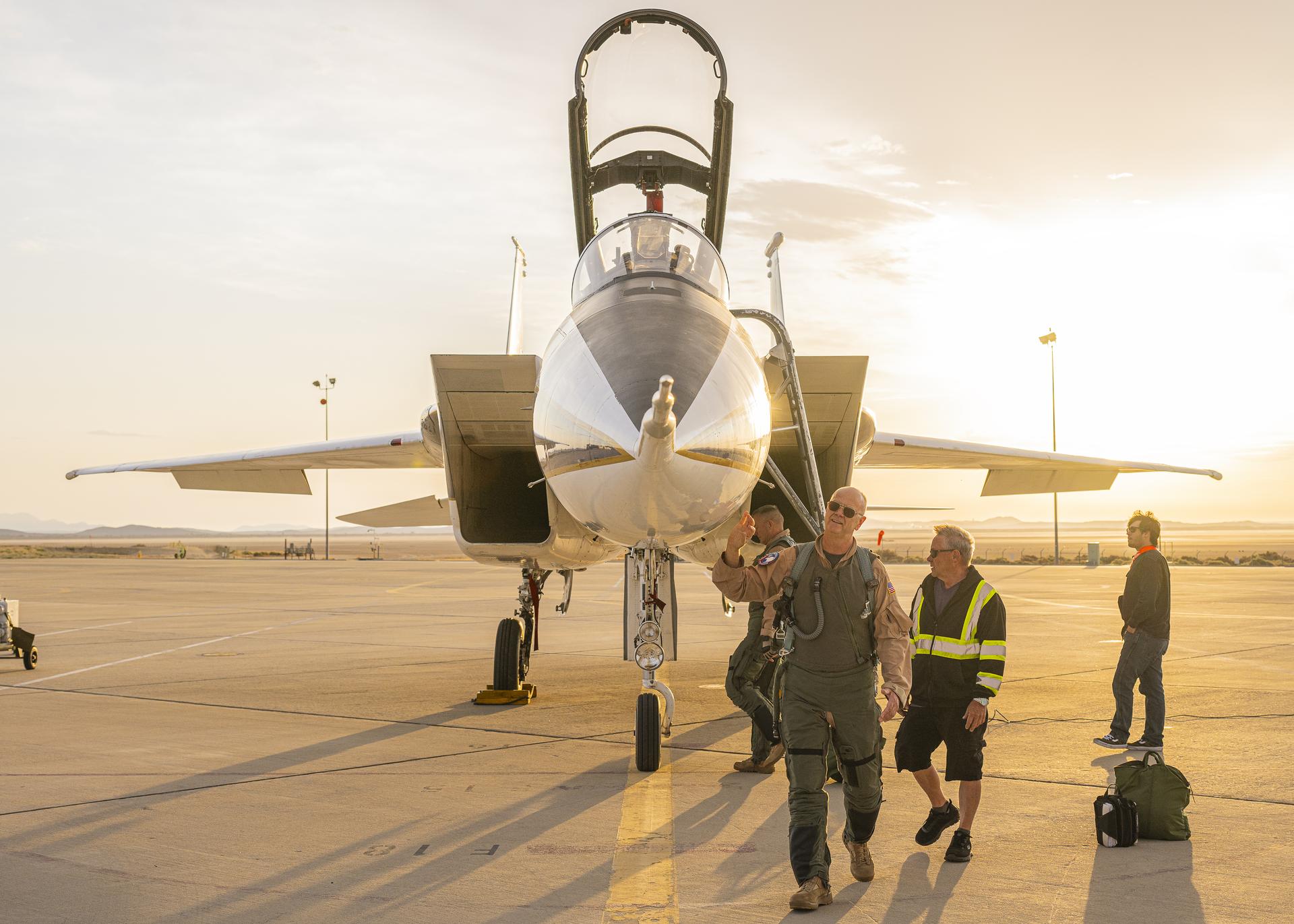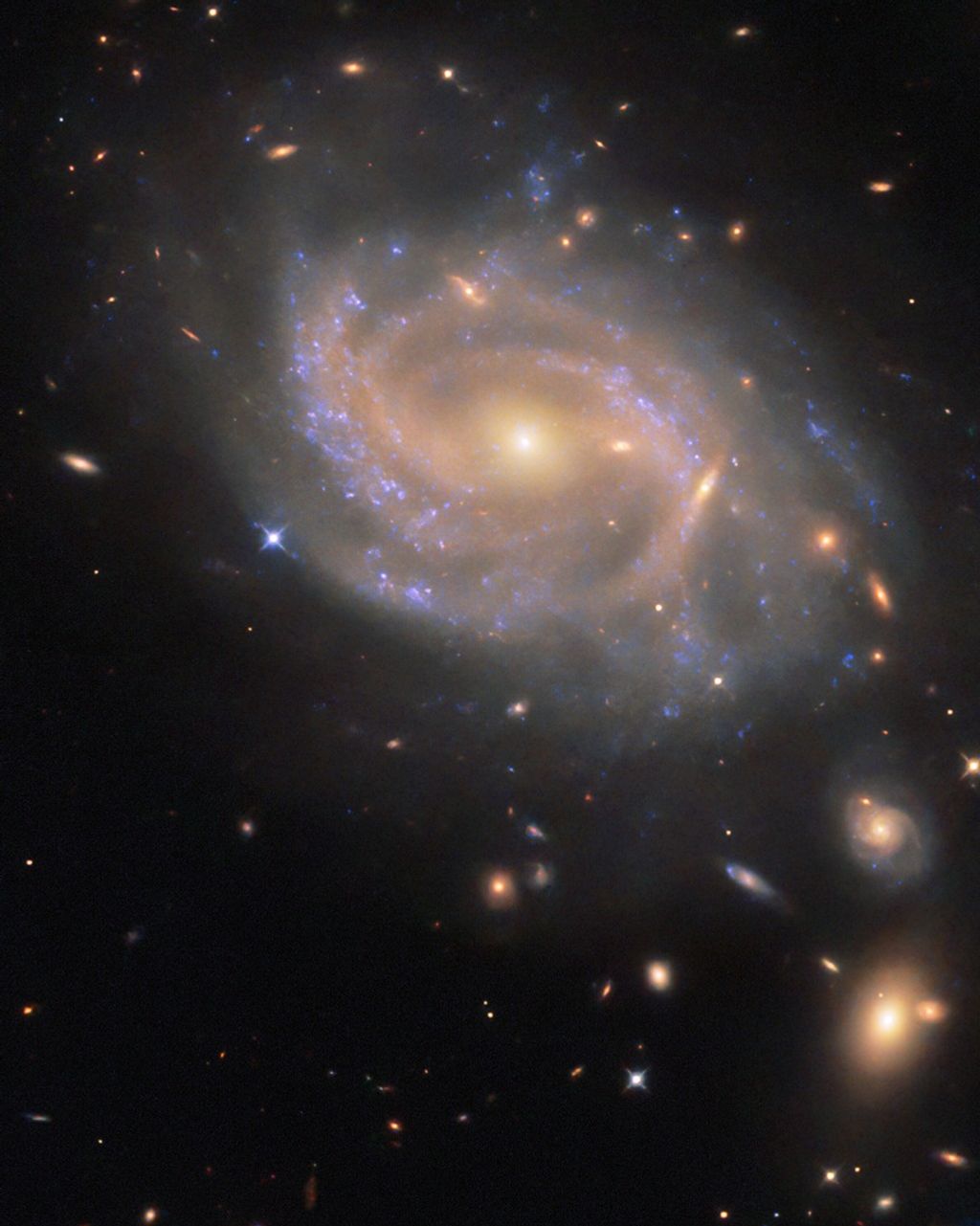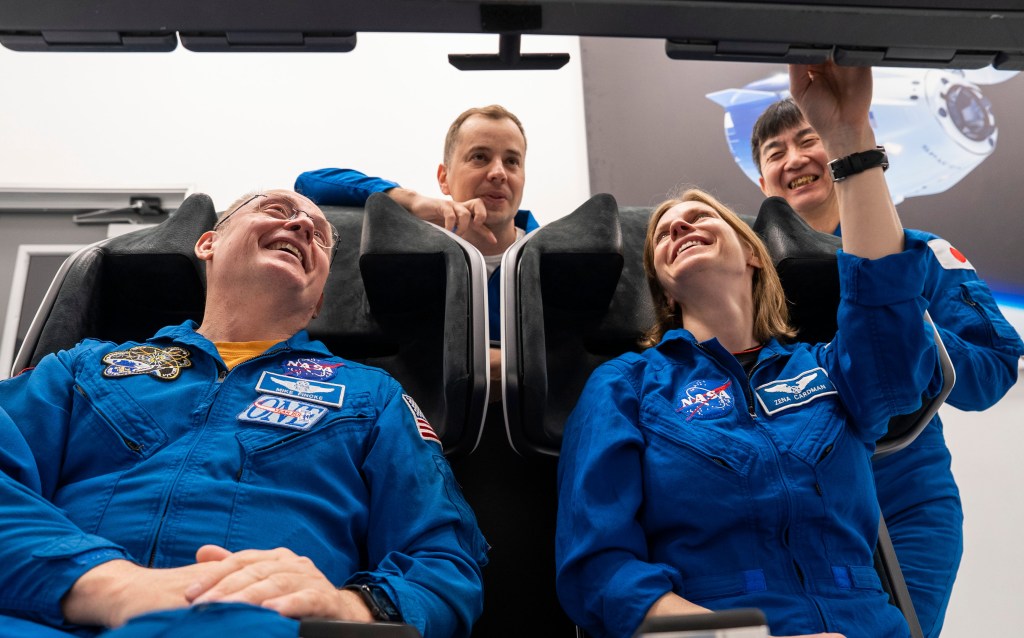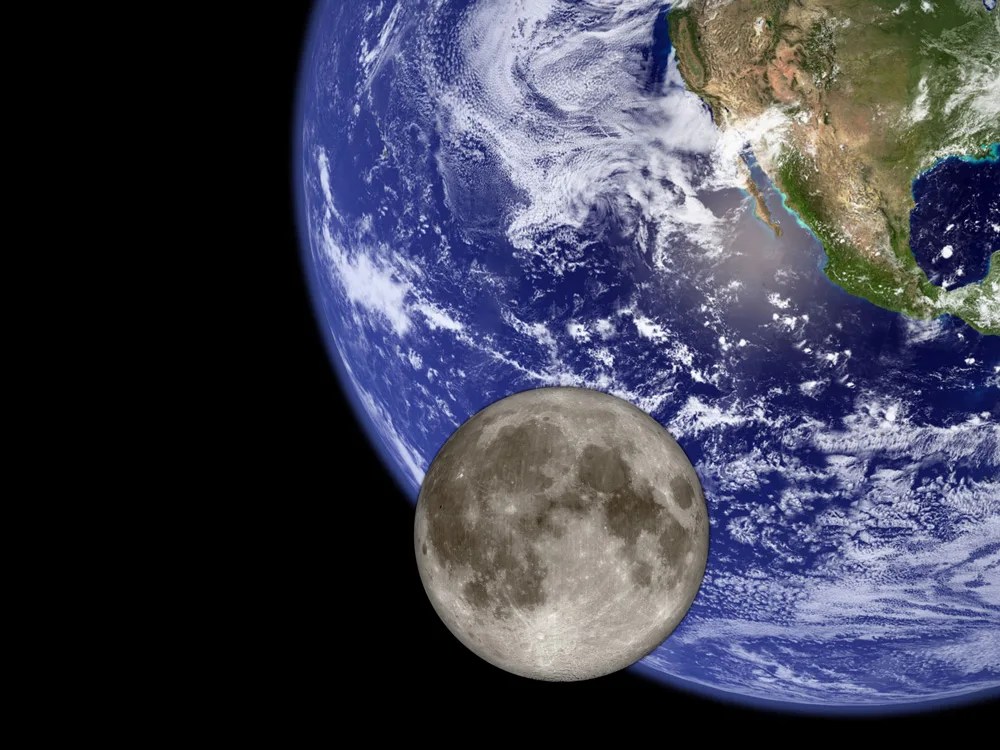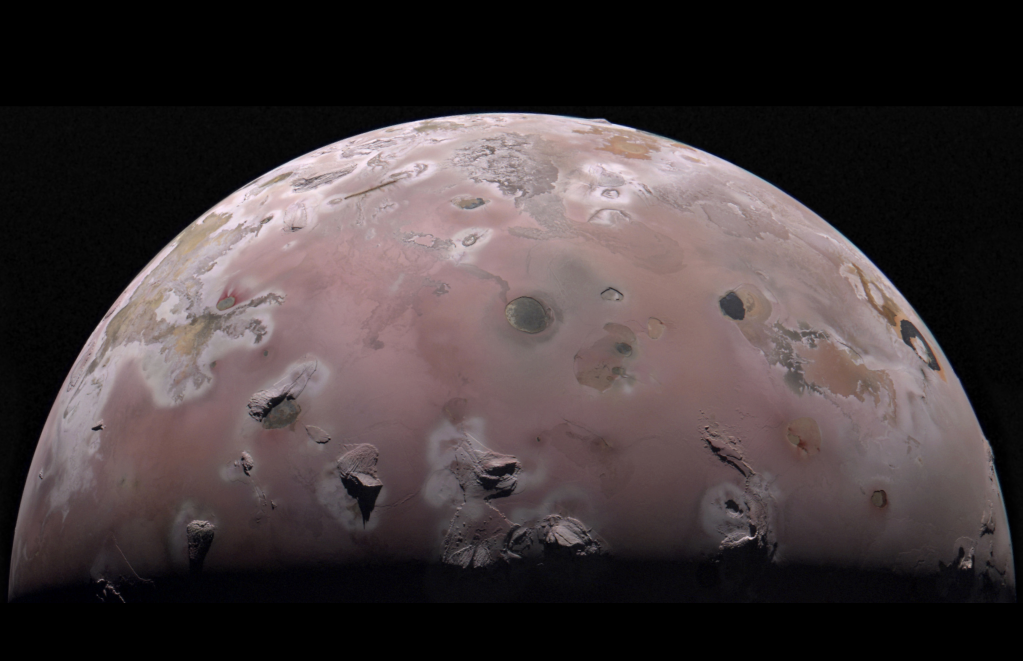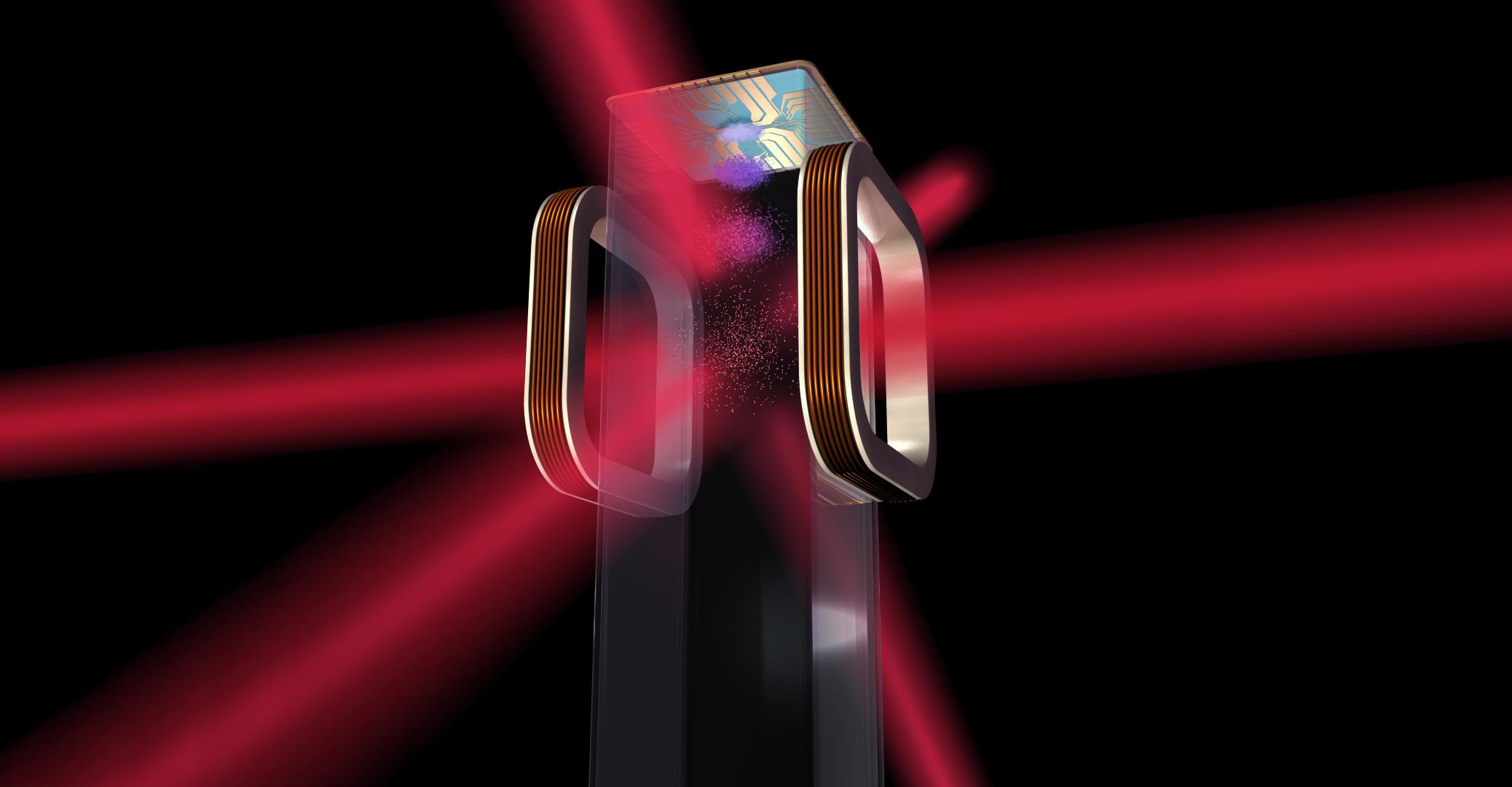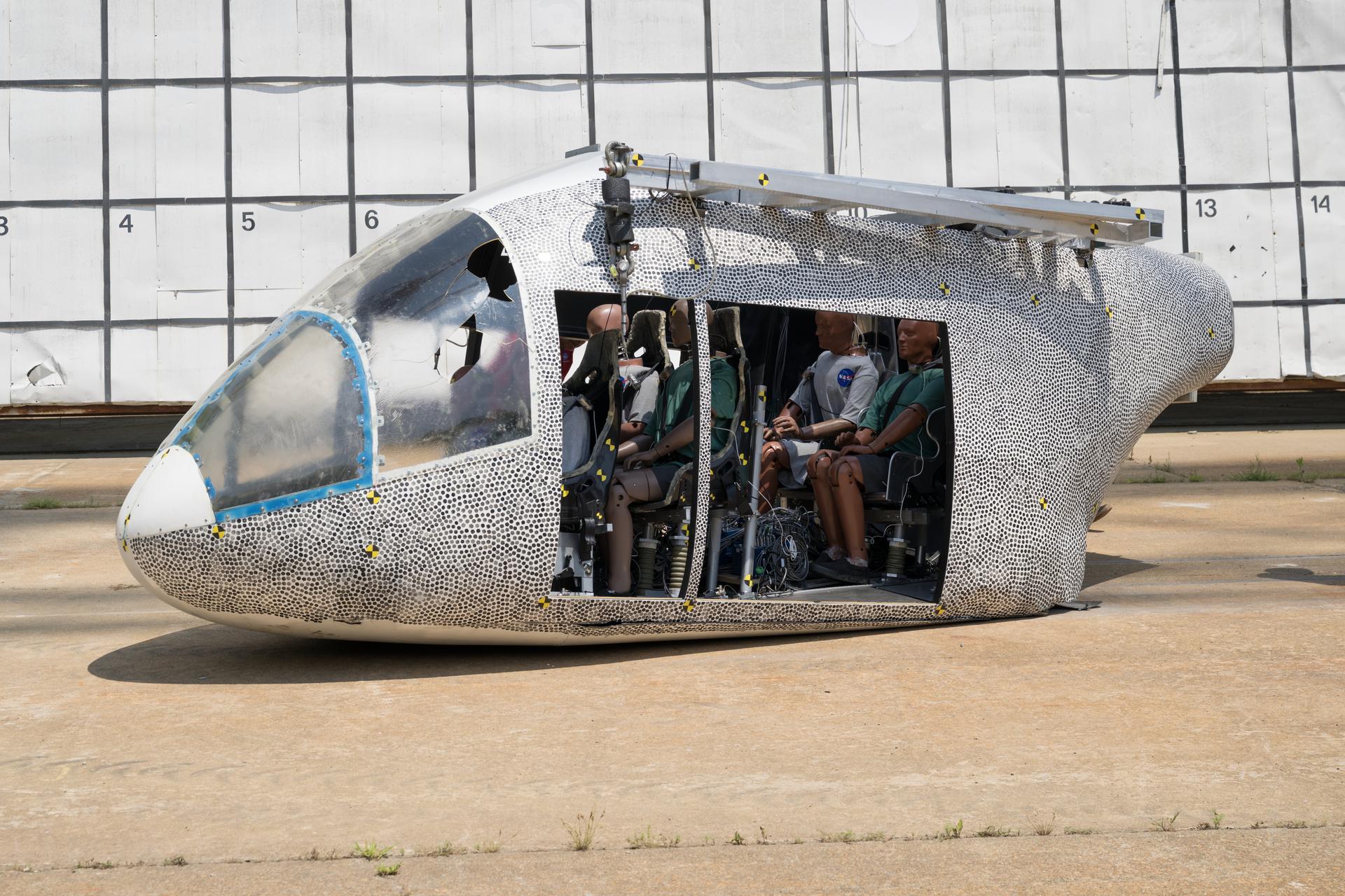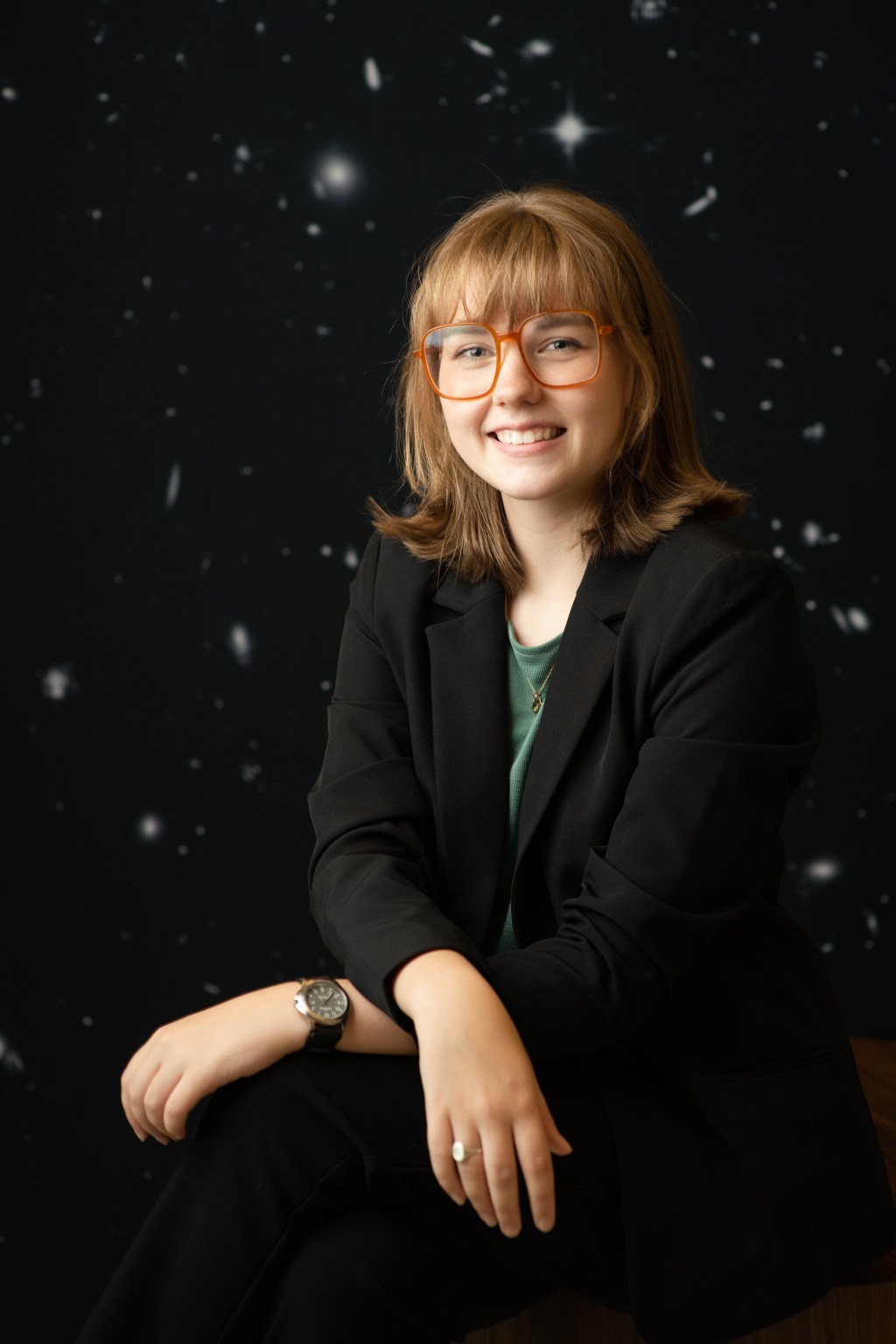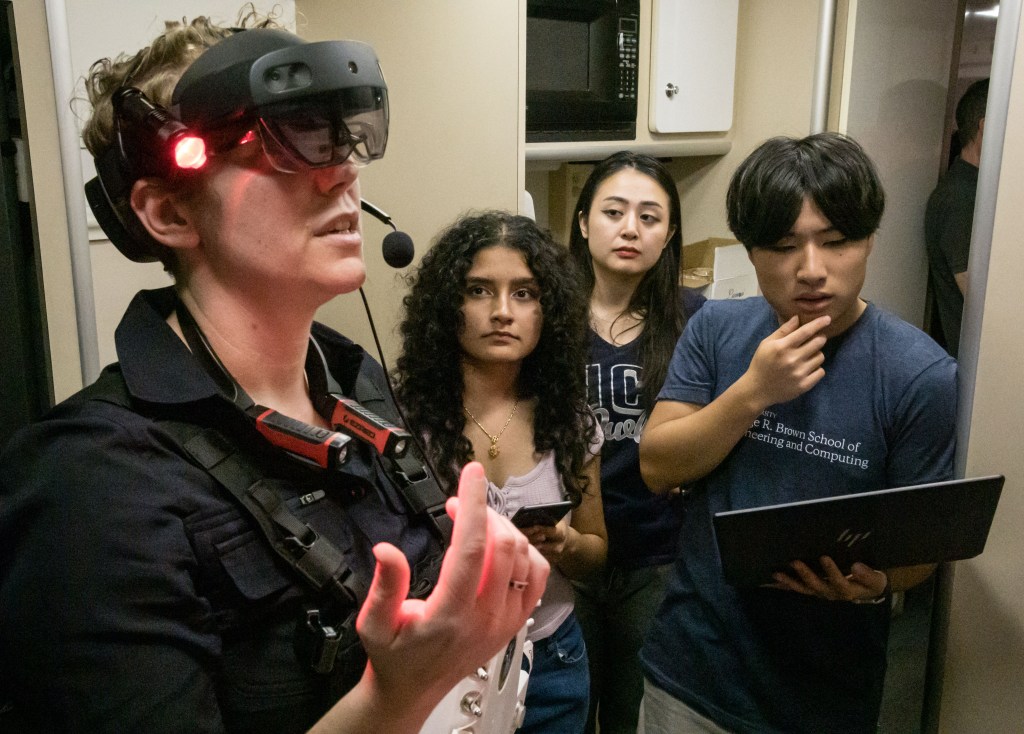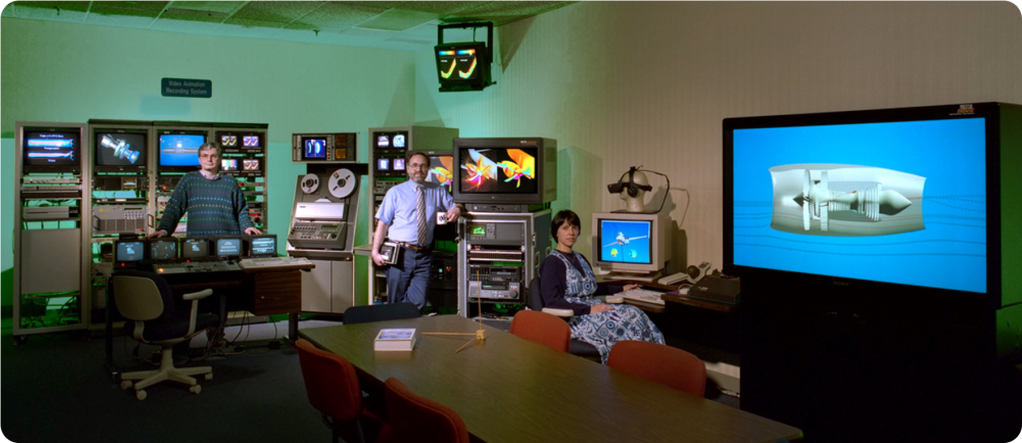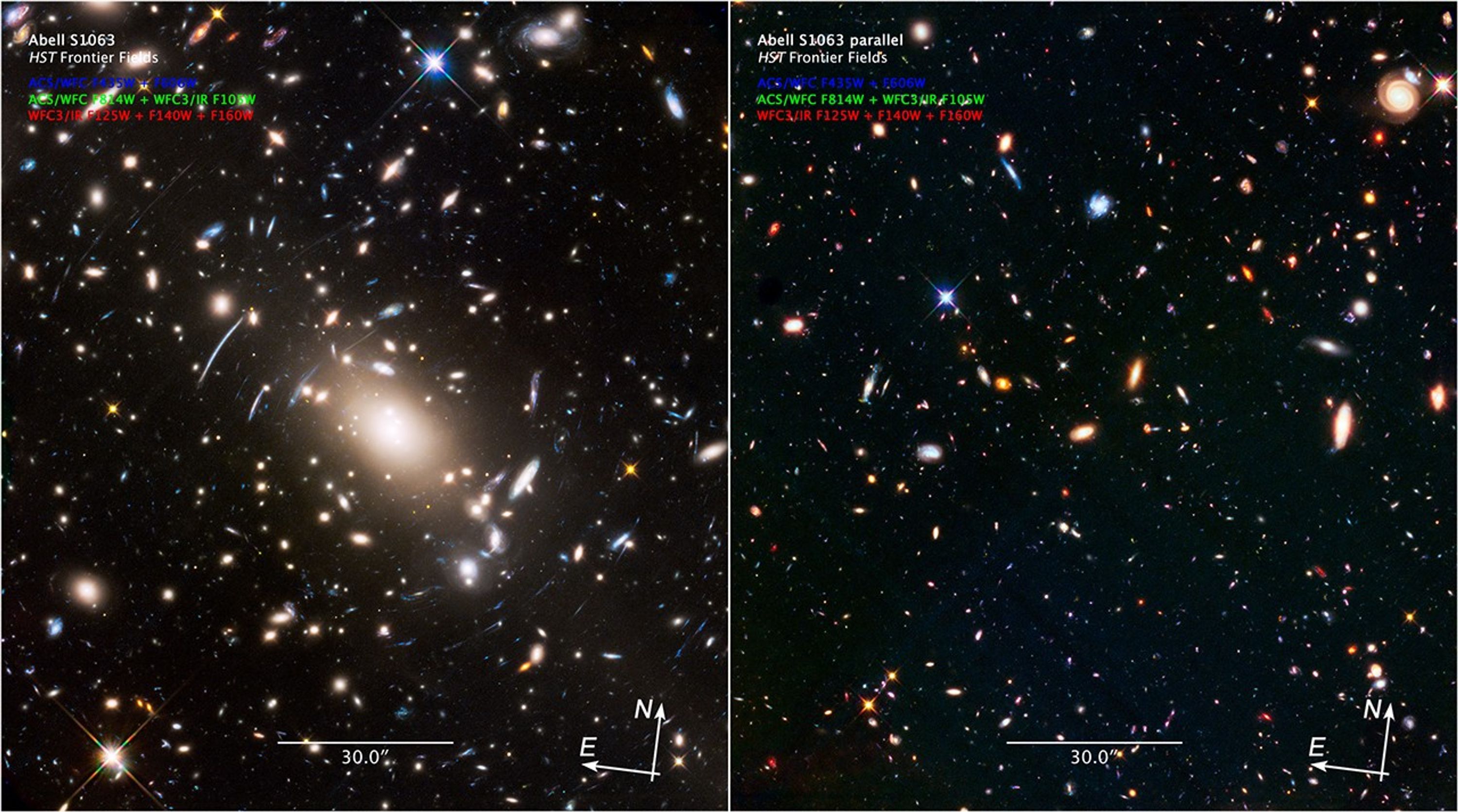1 min read
Parallel Field Image of Abell S1063

About the Object
- R.A. PositionR.A. PositionRight ascension – analogous to longitude – is one component of an object's position.22h 49m 17.69s
- Dec. PositionDec. PositionDeclination – analogous to latitude – is one component of an object's position.-44° 32' 43.8"
- ConstellationConstellationOne of 88 recognized regions of the celestial sphere in which the object appears.Grus
- DistanceDistanceThe physical distance from Earth to the astronomical object. Distances within our solar system are usually measured in Astronomical Units (AU). Distances between stars are usually measured in light-years. Interstellar distances can also be measured in parsecs.4 billion light-years (1.2 billion parsecs)
About the Data
- Data DescriptionData DescriptionProposal: A description of the observations, their scientific justification, and the links to the data available in the science archive.
Science Team: The astronomers who planned the observations and analyzed the data. "PI" refers to the Principal Investigator. - InstrumentInstrumentThe science instrument used to produce the data.HST>ACS/WFC, HST>WFC3/IR
- Exposure DatesExposure DatesThe date(s) that the telescope made its observations and the total exposure time.December 2005 – May 2016
- FiltersFiltersThe camera filters that were used in the science observations.HST>ACS/WFC: F435W (B), F606W (R), and F814W (I)HST>WFC3/IR: F105W (Y), F125W (J), F140W (JH), and F160W (H)
- Object NameObject NameA name or catalog number that astronomers use to identify an astronomical object.Abell S1063 Parallel Field
- Object DescriptionObject DescriptionThe type of astronomical object.Galaxy Cluster and Gravitational Lens
- Release DateJuly 21, 2016
- Science ReleaseNASA’s Hubble Looks to the Final Frontier
- Credit

This image is a composite of separate exposures acquired by the WFC3/IR and ACS/WFC instruments. Several filters were used to sample various wavelengths. The color results from assigning different hues (colors) to each monochromatic (grayscale) image associated with an individual filter. In this case, the assigned colors are: Blue: ACS/WFC F435W (B) + F606W (R) Green: ACS/WFC F814W (I) + WFC3/IR F105W (Y) Red: WFC3/IR F125W (J) + F140W (JH) + F160W (H)

Related Images & Videos

NASA's Hubble Looks to the Final Frontier
The Hubble image unveils a very cluttered-looking universe filled with galaxies near and far. Some are distorted like a funhouse mirror through a warping-of-space phenomenon first predicted by Einstein a century ago. In the center of the image is the immense galaxy cluster Abell...
Share
Details
Claire Andreoli
NASA’s Goddard Space Flight Center
Greenbelt, Maryland
claire.andreoli@nasa.gov




